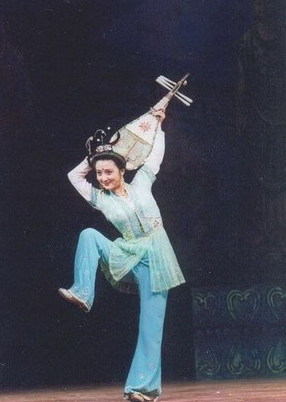| |
Diversified Artistic Varieties of Cultural Exchanges
For a considerably long period after the founding of New China in 1949, China largely sent out performance troupes from the sectors of folk songs and dances, acrobatics, puppets, Peking Opera and Shaoxing Opera. Since the reform and opening up in the late 1970s, Chinese and foreign cultural exchanges covered wider scopes and artistic varieties. Art troupes performing abroad started to show such Chinese operas of rich local and life features as Hebei Bangzi, Sichuan Opera, Kun Opera, Henan Opera, Pingju, Hanchu Opera, Shanxi Opera, Hunan Opera, Lü Opera, Hua Opera, Fujian Opera, Xiang Opera, Hainan Opera, Chao Opera, Shaanxi Opera, Huangmei Opera, Huagu Opera, Liyuan Opera, Gaojia Opera, Jiangxi Opera, Wu Opera, Gui Opera, and Longjiang Opera. The art forms of unique Chinese styles, such as folk operas, dramas, comic dialogue, Pingtan, Schattenspiel, Dong Opera, Buddhism music, Chuanjiang haozi, Xinjiang MUQAM and Tibetan mask drama, also went towards the international stage for foreign audiences.
When performed abroad, Along the Silk Road, a large-scale Chinese national dance drama, was eulogized as an oriental treasure integrating traditional Chinese art and western ballet. Beijing People’s Art Theatre performed Tea House, a drama of Lao She, in Canada, West Germany, France, Switzerland, Japan and Singapore, overpowering foreign audiences with its profound contents and superb performances. Foreign art troupes brought about diversified art in their visits to China, including elegant and popular arts, traditional symphonies, chamber music, ballet, opera and drama, and lively folk dances, modern dances, pop songs, circus, black art, and dumb shows. In 1985 and 1987, separately, six ballet troupes from Europe, America, Asia and Oceania visited China, showing classic and modern ballets of various styles and schools. Since 1981, dumb show troupes from Austria, France, Czechoslovakia, Britain, Bulgaria, Romania and Brazil visited and performed in China. Mireille Mathieu, a famous French singer, held nine concerts in Beijing and Shanghai, contributing to the improvement of Chinese vocal musical with her unique style of singing. In the 1990s, more foreign performance art forms were shown in China.

Along the Silk Road Stage Photo
Art exhibitions exchanged between China and foreign countries were gorgeous with peculiar characteristics. Since the reform and opening up in the late 1970s, China smashed the old outdated restrictions on art exhibition exchanges. It paid higher attention to the national and art features of works. In this way, exhibitions going abroad and entering China showed more diversified themes and styles. Exhibitions sent abroad were both comprehensive and specific, nationwide and specific region-bounded, or individual, and traditional and modern. The exhibited articles included Chinese paintings, calligraphy, oil paintings, water color, engraving, sculptures, potteries, embroidery, paper-cutting, lacquer paintings, New Year paintings, Farmer Paintings, children paintings, photography and unearthed cultural relics. Foreign exhibitions in China displayed traditional formative arts, folk handicrafts and modern art of various schools from various countries. They consisted paintings and sculptures from national museums in Europe and the United States, such as painting works of Da Vinci, Michelangelo, Raphael, Titian, Rubens, Millet, Paul Gauguin, Monet, Giorgione, Kollwitz, Picasso, Robert Rauschenberg, Isaak Levitan, Max Weiler, and ancient and modern folk handicrafts like Qrthdst cultural relics and black wood sculptures from Africa.
|
|
